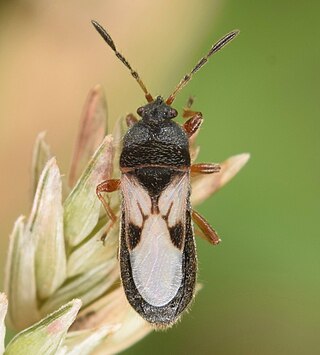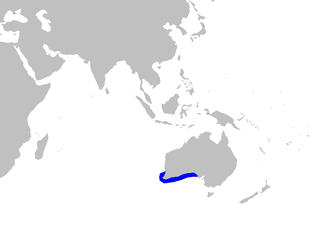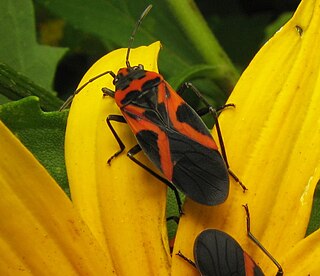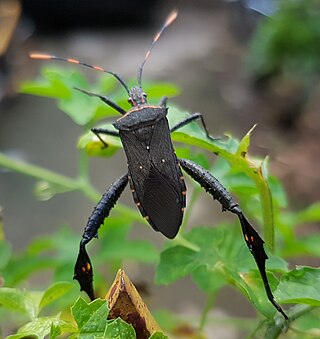The occidental gerbil is distributed mainly southwestern Morocco. Less than 250 individuals of this species are thought to persist in the wild.

Blissus leucopterus, also known as the true chinch bug, is a small North American insect in the order Hemiptera and family Blissidae. It is the most commonly encountered species of the genus Blissus, which are all known as chinch bugs. A closely related species is B. insularis, the southern chinch bug.

The western spotted catshark is a cat shark of the family Scyliorhinidae found only around southwestern Australia, at depths between 100 and 400 m. Males can grow up to 60cm in length, while females have a maximum length of 53cm. The western spotted catshark reproduces via oviparity.

The Blissidae are a family in the Hemiptera, comprising nearly 50 genera and 400 species. The group has often been treated as a subfamily of the Lygaeidae but was resurrected as a full family by Thomas Henry (1997).

Blissus is a genus in the true bug family Blissidae, commonly called chinch bugs in North America. The review by Slater (1979) listed 27 species. The species B. leucopterus, B. occiduus and B. insularis are important pests of cereal crops and turf grasses in their different ranges in the United States.
Blissus insularis, the southern chinch bug, is a species of true bug in the family Blissidae. It is found in North America and Oceania.
Blissus sweeti is a species of true bug in the family Blissidae. It is found in Central America and North America.
Blissus canadensis is a species of true bug in the family Blissidae. It is found in North America.
Blissus arenarius is a species of true bug in the family Blissidae. It is found in North America.
Nipus is a genus of lady beetles in the family Coccinellidae. There are at least four described species in Nipus.
Pilophorus brunneus is a species of plant bug in the family Miridae. It is found in North America.
Phoenicocoris rostratus is a species of plant bug in the family Miridae. It is found in North America.

Historis acheronta, the tailed cecropian, is a species of crescents, checkerspots, anglewings, etc. in the butterfly family Nymphalidae.
Aradus implanus is a species of flat bug in the family Aradidae. It is found in North America.
Geocoris bullatus, the large big-eyed bug, is a species of big-eyed bug in the family Geocoridae. It is found in North America.

Lygaeus turcicus, the false milkweed bug, is a species of seed bug in the family Lygaeidae. It is found in Eastern North America.

Geocoris punctipes, the big-eye bug, is a species of big-eyed bug in the family Geocoridae. It is found in the Caribbean, Central America, North America, Oceania, and South America.

Leptoglossus gonagra, known as the passionvine bug, citron bug or squash bug in different parts of its range, is a species of leaf-footed bug in the family Coreidae. It is found in Africa, the Caribbean, Central America, North America, South America, Southern Asia, the Pacific Ocean and Oceania.
Irbisia solani is a species of plant bug in the family Miridae. It is found in North America.






